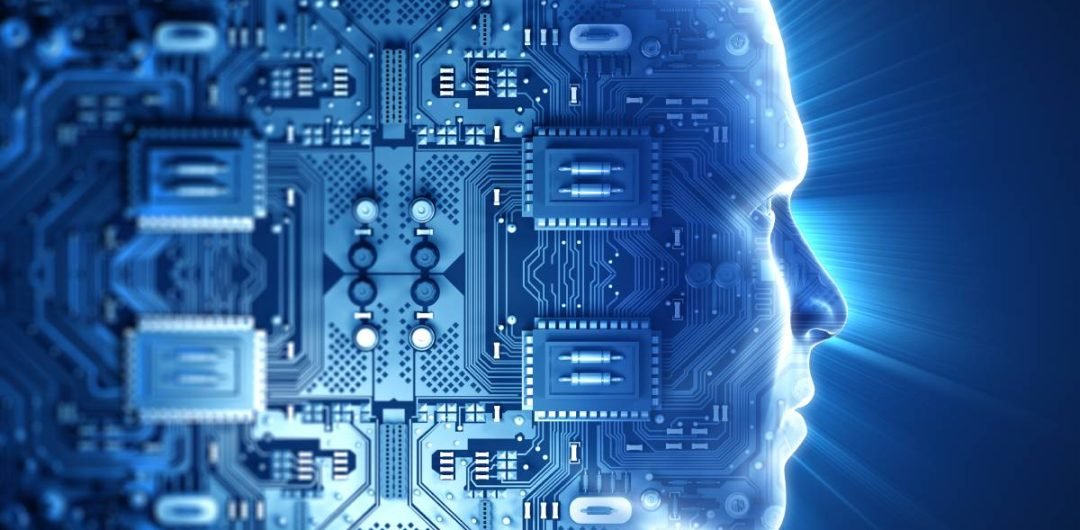Top 10 Technological Trends 2024
Adaptive AI, the metaverse, super applications and sustainable technology are some of the technological trends that will mark the next 2023, according to the analyst firm Gartner. A new year in which the digital transformation process of companies is expected to gain sufficient momentum to advance in meeting the digital goals set by the EU for 2030.
If you are thinking of investing in digital transformation to improve productivity and competitiveness levels or promote sustainability and innovation in your company, then we will explain what will be the technological trends that you should not lose sight of.
List of technological trends 2024
The digital transformation of the business fabric is an unstoppable phenomenon, as new technologies emerge and are applied to the different business processes, products and assets that make up an organization.
According to data published in the Worldwide Digital Transformation 2022 Predictions, prepared by the International Data Corporation (IDC), global spending on digital transformation during 2022 reached 1.8 trillion dollars, which represents an increase of 17.6% compared to 2021. That being the case, and I take into account These figures, the forecasts for the year 2023 confirm an increase in investments in technologies for digital transformation. As IDC pointed out, during its annual IDC Future Scape meeting, “by 2023, 90% of organizations worldwide will prioritize investments in digital tools, to increase the supply of physical spaces and assets that offer digital experiences.” In addition, it is expected that “by 2025, 60% of organizations will adopt an approach based on automation, centers of excellence (COE) and Low Code and No Code platforms”.
Although the automation of business processes and the use of No Code platforms will gain more and more weight in the business field, a “boom” is also expected in terms of the integration of other technologies such as adaptive AI, the metaverse or the cloud. industrial. For this reason, below, we analyze the main strategic technological trends that will mark the world in 2023.

1. Adaptive AI
More and more companies are adopting artificial intelligence systems to optimize customer service, design intelligent and self-sufficient solutions, and improve their competitive position in the market.
However, the first of our technological trends, adaptive AI, goes a step further, surpassing the traditional models of automatic learning or Machine Learning that have been applied until now. While traditional AI systems can have their level of functional accuracy and efficiency significantly affected by changes in the operating environment, AI systems based on an adaptive learning method employ a flexible and continuously enriched approach. This allows the system to monitor and learn from changes as they occur, while continuing to work on older predictions, keeping processes updated in real time.
2. Metaverse
At the end of 2021, the company Facebook Inc., of which the social networks Facebook and Instagram and the WhatsApp instant messaging service are part, changed its name or trade name to Meta.
A change that, in the words of company owner Mark Zuckerberg, is due to the need to create a “metaverse.” Now, what is the metaverse? We currently call any virtual world in three dimensions a metaverse. However, there is no agreed definition in this regard. Some define it as an evolution of the Internet, others talk about the convergence between our physical space and the digital environment and, finally, others refer to an ecosystem that integrates different virtual worlds that offer an immersive experience to users and where they can take carry out different daily activities.
Currently we could say that there are two types of metaverse, those that use Blockchain technology and those that do not. In the first case, we can find examples such as Decentraland , where Blockchain technology grants a certain interoperability to the platform, by being able to use the coins obtained (MANA cryptocurrency) in this 3D universe on other different platforms. In the second case, we find examples such as the Fortnite video game, where a user can buy assets and use the own currency offered by that game, exclusively on that platform.
3. Super apps
Super applications, also called superapps, are the new natural evolution of the digital application market. However, although it may seem like a novel concept, the term was coined in 2010 by the founder of BlackBerry, Mike Lazaridis, who defined them as “a closed ecosystem of many applications.”
Therefore, it is a kind of all-in-one platform, where the user has all the services they need, in one place. This brings significant benefits, since the need to download other applications and become familiar with their usage dynamics is eliminated.
These super applications have been making a name for themselves in markets such as Asia and Latin America, where they are already a reality, with examples such as WeChat in China and Rappi in Colombia. However, in the US and Europe, for now we will have to wait for a company to decide to jump into the pool and bring together in a single space, different types of services such as financial, leisure, transport, beauty and wellness.
4. Sustainable technology
Technology is an essential ally for the fulfillment of the Sustainable Development Goals (SDGs) , established within the 2030 Agenda. A document, the latter, which was approved in 2015 by the General Assembly of the United Nations and which establishes 17 objectives and 169 goals to be developed, with a horizon of 2030.
Taking this context as a starting point, technology can contribute to the fulfillment of many of the goals established within the 17 SDGs. Some examples of this can be found in the generation of clean and affordable energy, through the construction of networks and smart cities; together with the action measures against climate change where, at a technological level, the creation of ecological data centers and ecological electrical power systems stand out.
For all these reasons, it can be said that sustainable technologies, also called sustainable technologies, are those that seek to preserve the principles of sustainability and minimize environmental impact.
5. Realizing Wireless Value
The term “wireless value realization” is coined by the prestigious analyst firm Gartner to describe “the range of ways in which next-generation wireless technologies will soon deliver new and improved services and reduce the costs of capital.”
According to Gartner, wireless technology is undergoing an important evolution in two directions.
On the one hand, there is an improvement in basic wireless communication capabilities, which entails an increase in the range of possibilities they offer, compared to previous times.
On the other hand, wireless technology is evolving in such a way that it transcends mere connectivity and incorporates capabilities that, according to Gartner, “serve as a basis for technological innovation.” So much so that, currently, it is being applied in different areas related to “radar detection, improvement of ubiquity, development of ultra-low consumption wireless systems and value-added services, such as multicast transmission or vehicle communications.” to vehicle”, says the consulting firm.
6. Industrial clouds
Industrial cloud platforms or for industrial use are another of the technological trends that will mark the year 2023. A concept that should not be confused with commercial cloud. If the first refers to systems or services in the cloud designed to serve a specific industrial process, such as the manufacture of drugs; the second refers to cloud computing systems created exclusively for clients who demand this type of service and which are not suitable for a specific industrial process.
Industrial cloud solutions confer significant benefits and advantages in manufacturing and related environments such as:
- They promote vertical integration processes, that is, they contribute to the alignment between production processes and those that are linked to the different business units of an organization such as marketing, sales, logistics, IT, etc. All this, through the creation of a fluid and data-centric collaboration network.
- The industrial cloud is better equipped to adapt to the changes that are coming with Industry 4.0 . This is due to its ability to receive data from smart devices and integrate communication protocols.
- The industrial cloud enables you to meet variable and highly customized industry requirements, as it comprises data, standards, and policies associated with a specific industry.
7. Digital immune system
To understand the nature of this term, one has to go back to a 2012 publication titled The Emergence of a Digital Immune System . A document collected in the catalog of the National Center for Biotechnology Information (NCBI) in which an attempt is made to clarify the meaning of this seventh member of the list of technological trends 2023.
According to the document, the term was coined by David Lipman of NCBI, and who establishes “an analogy between computing and biology, a recurring technique of computer scientists (viruses, genetic algorithms and neural networks)” to explain this concept.
According to Lipman, “a digital immune system works in the same way as an adaptive biological immune system: observing the microbial landscape, detecting potential threats and neutralizing them, before they cause widespread damage.”
Therefore, the objective of this digital immune system is to detect a new virus, practically at the same moment that it enters the computer system of an organization. The immune system automatically captures it, analyzes it, adds detection and protection against this new type of virus, removes it, and transfers the information to systems running the antivirus, so it can be imminently detected in the future. Thus, what is achieved is that viruses can be removed almost as soon as they enter the system.
8. AI TRISM
AI TRiSM is short for ArtificiaI Intelligent (T)rust, (Ri)sk and (S)ecurity (Management). A concept that refers to the need to develop methods that allow applying ethical principles to AI models. Now, what are AI models? Also called AI modeling refers to the creation, training and implementation of machine learning algorithms, based on available business data, thus emulating a logical decision-making process.
In this sense, it is essential that organizations commit to creating ethical and transparent models in order to guarantee the security and fundamental rights of users. More if possible taking into account the growing role of artificial intelligence and robotics at the business level, smart industry technologies or 4.0 , in the coming years.
Such is the importance of this issue that, in November 2021, the 193 Member States of the UNESCO General Conference set a precedent, adopting what is considered the first global normative instrument on AI, known under the name of the Recommendation on the Ethics of Artificial Intelligence . A document whose function is to protect and promote human rights, in addition to serving as a global normative base, to contribute to respect for the rule of law in the digital world.
9. Observability applied
We could say that the concept of applied observability, with regard to the areas of IT and cloud computing, is divided into two phases.
Phase 1: Observe a constant stream of performance data from a distributed application and the hardware on which it runs
Phase 2: Apply fixes and enhancements to debug the distributed application, that is, an application made up of different components that run in separate environments, within a network.
The purpose of the ninth component of the list of technological trends is to promote the integration and relationship of multiple sources of telemetry data (technology used to remotely monitor and analyze data from different computer systems) that, together, help to understand better the functioning of a software system under observation, to monitor its performance and to identify problems, for their later correction.
10. Composable software platforms
Technology is constantly evolving. Proof of this can be found in the great disparity of software solutions that dominate the technology market. A situation that, on many occasions, leads companies to start a whole process of research, analysis and comparison of different solutions, until finding the one that best suits the needs and demands of a certain department or area.
Faced with this type of software solutions, there is an alternative on the market, capable of satisfying the different needs of all the departments that are part of an organization: composable software platforms. A technological product that allows software components to be interchanged and linked at will, through application connectors.
Companies that bet on the latest of our technological trends will be able to respond more quickly to changes and unforeseen events in the market, minimize operating costs, increase efficiency and improve the competitiveness of the organization.



